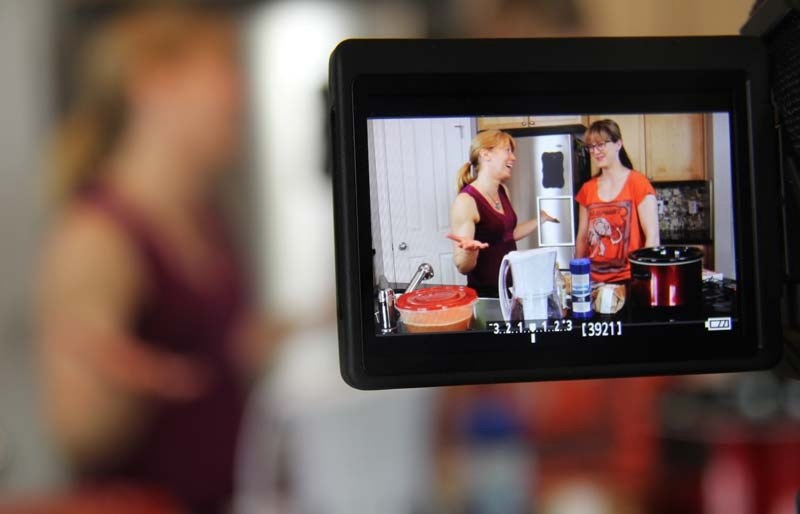Every Wednesday afternoon Karen Osburn turns the kitchen of her Erin Ridge home into a television studio.
The chiropractor and co-owner of Synergy Family Wellness Centre in Tudor Glen has started a free weekly video blog series called Dr. Karen in the Kitchen.
This week she showed her viewers how to make bone broth in five minutes. Previously she tackled a recipe for Bulletproof Coffee (buttered coffee) and kombucha (fermented tea).
Osburn started her vlog series as a "how-to guide" to primal nutrition – a diet high in fruits and vegetables, lean meats, seafood and no grains – a way of eating similar to our hunter-gatherer ancestors.
"It represents living the way our bodies are supposed to – eating food that's real," said Osburn.
The short videos are part of a project that Osburn and her husband, a fellow chiropractor, launched in March.
Over a period of four months, they designed and executed their own online video-based course called Primal4 with a total of 21 modules on four categories of primal living – nutrition, movement, purpose and connection.
Topics cover everything from eating (the most popular) to relationships, in videos, webinars, reference guides and soon weekly podcasts.
"It's about moving our body in certain ways, lifting heavy things and moving fast, not feeling you have to be at the gym for hours at a time, having a purpose in your life – what gets you up in the morning and keeps you excited," explained Osburn.
The program is based on teachings by Robb Wolf (The Paleo Solution), Mark Sisson (The Primal Blueprint) and Life by Design, a lifestyle program which the couple became certified in 2012.
Previously the Osburns were hosting monthly seminars on how to change the way people think, move and eat in order to decrease their risk of chronic disease, but found getting people out to them in the evenings was difficult.
It was then they decided to bring the information online.
The primal program was borne out of a personal commitment to the primal philosophy over the last two decades, as well as questions from patients, said Osburn.
"Moms will say to me that after they get home from work with three kids, hockey, soccer etc., it's just easier to go to the drive thru or order a pizza. I get that. People are exhausted."
Add in that people are so inundated with information they don't know what to believe, the default action becomes "screw it, let's go to McDonald's," she said.
Meal preparation is the focus of Osburn's next video blog.
Paleo vs. primal
The Paleolithic Diet, also known as the caveman diet, is based on the eating habits of early man about 10,000 years ago. The diet prohibits dairy, grains, legumes and processed food, which were unavailable to Stone Age hunters.
Critics argue the concept of Paleolithic living is flawed – the philosophy implies that the human diet is rooted or genetically determined in the Paleolithic era and none of the foods available to cave men (in terms of diversity and quality of meat and roughage) would actually be available today.
Studies have stated that a strict paleo regimen may be low in calcium, vitamin D and high in fish, which may contain higher levels of environmental toxins.
Eating paleo can also be more expensive. A study published in Nutrition Research in 2011 found that a 9.3 per cent increase in income is required to meet the requirements of a paleo diet that also meets all daily recommended intakes of nutrients (except for calcium).
Compared to the Paleolithic Diet, the primal/ancestral eating movement is less restrictive, explained Osburn. It permits some full-fat dairy products.
Common ground between advocates and critics on paleo and primal nutrition is that eating whole food and cutting out processed food is good. Processed food is typically high in sodium, hydrogenated fats, low in fibre, and has been linked to obesity, cardiovascular disease and certain cancers.




